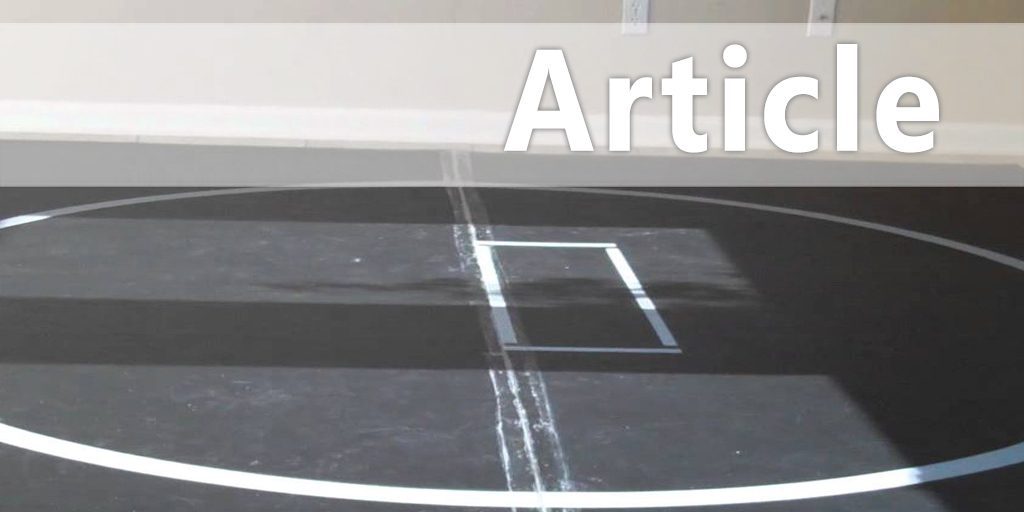|
How to Design a Greco-Roman Wrestling Training Program By: Mike Willey Provided by: STACK
Physiological Profile The athlete's physiological profile takes into account the metabolic demands of his sport and his strength, power, speed, agility, body composition, endurance and flexibility. The metabolic demands can vary in percentage from one energy system to another, depending on the length of the wrestling match, the types of moves executed and rest periods between grappling or attempting to throw. A 2002 study found the average duration of matches was 427 seconds, with mean durations of work and rest of 317 and 110 seconds, respectively. The mean periods of work and rest were 37.2 and 13.8 seconds, respectively. Mean blood lactate concentration was 14.8. This tells us that the work-to-rest ratio is almost 3:1, pointing to the need to improve power endurance and fatigue rate. The mean general rating of perceived exertion for all matches was 13.8, according to the Borg scale. Most of the wrestlers (53.3%) perceived exertion to be highest in the flexors of the forearm, followed by the deltoids (17.4%) and the biceps brachii muscles (12.0%). This also gives us an idea of what muscles are most used and need to be trained. A 2010 study offers insight into the physiological needs of wrestlers, showing that they must have both a high muscular endurance and a high VO2 max. The study found that wrestlers had a VO2 max of 50 ml/kg/min, but were able to perform 67 Sit-Ups and 66 Push-Ups. This shows us that both muscular and cardiovascular endurance are key to success. Biomechanical Profile Studies on the specific biomechanics of wrestling are limited; however, anecdotal evidence tells us that in Greco-Roman wrestling, the hips must have good range of motion, stability and strength. Much of this style of wrestling is done standing up. The legs can't be grappled and used for a take down, which calls for less of a knee bend than traditional wrestling. In wrestling, the hands are commonly used more than in other sports and are important to consider, with a wide range of motion associated with the hands and fingers. The shoulders, since they are a common site for injury, also must be flexible. The patterns of velocity and resistance range from standing still to exploding violently. Wrestling involves both eccentric and concentric contractions, along with long-standing isometric contractions in which opponents are at a standstill or in defense for extended periods. Resistance can vary, depending on what move you are attempting. Resistance is greater when you are attempting to throw or suplex your opponent, lifting him entirely off the ground. Because of the different muscle actions and joints primarily used, we must focus on improving strength and power in the hips, lower back, abs, upper back and forearms. All other groups should be trained, but with less emphasis. Medical Profile The medical profile spots any weaknesses in common injury sites, so the athlete can work on curing those weaknesses. Wrestling involves great physical demand and direct contact between competitors. Thus, it has a higher injury rate than most other sports. Wrestling was second only to football in sports-related injuries; and 39 percent of injuries resulted from aggravation of previous injuries. Because the Greco-Roman style focuses on upper-body throws and takedowns, Greco-Roman injuries were most often in the upper extremities. This differed from freestyle wrestling, where the injuries were more often in the lower extremities. Specifically, the most common injuries are to the head, neck, face, shoulder, clavicle, elbows and trunk. Programming The wrestling program is separated into a number of different periods over the annual cycle (e.g., active rest, off-season, pre-season, and in-season). A periodized strength and conditioning plan (linear or undulating) is vital for recovery and optimal timing of peak performance. Several unique features make program design challenging for wrestling, including a long in-season (4–5 months), frequent competitions (2–3 matches per week) and optimization of competition body mass over several months. Nevertheless, you can manipulate several types of program variables to suit each wrestler's specific needs, depending on timing within the annual cycle, training age, and level of competition. Power and Strength If the athlete lacks power and strength, include Olympic-style and core strength lifts in the program at maximal and submaximal loads. Great exercises include Squats, Split Squats, Side Squats, Lunges, Squat Jumps, Power Cleans, Hang Cleans from the knees, Hang Cleans from the thighs, One-Handed Dumbbell Cleans and One-Legged Dumbbell Cleans. Loading for such exercises should follow a periodization model. You should at least maintain the strength base when using power training, with lighter loads that approach maximal mechanical power outputs (i.e., 30 to 45% of 1RM). Sets should contain no more than six repetitions; our unpublished data suggest that three may be optimal. In fact, you can only perform 1 or 2 repetitions within a set of 6 at or above 90 percent of peak power. Anaerobic and Aerobic Programming Wrestlers need both anaerobic and aerobic programming to prolong the time until fatigue. The anaerobic system provides the wrestler with short, quick bursts of maximal power during the match, while the aerobic system enables the wrestler to sustain submaximal effort for the duration of the match. A wrestler of high ability in one but low ability in the other is not likely to perform at an elite level. With anaerobic training, focus on becoming as explosive and powerful as possible, giving the wrestler the advantage while attacking and defending during the match. Sets of 1-6 repetitions of very powerful movements is best. A study of elite-level wrestlers found a direct correlation between successful wrestlers and their maximal oxygen uptake. It was consistent that the less successful wrestlers had a maximal oxygen uptake at about 60 ml/kg/min, while the most successful wrestlers were measured at upwards of 70 ml/kg/min. This shows how important it is to be well-trained and have a highly efficient cardiovascular system to compete at the highest level in this demanding sport. With aerobic training, it's important to be well-conditioned to sustain the energy needed to perform at a high level throughout the match. It is certainly not important to be able to compete in a marathon, but wrestlers should be able to keep a relatively high pace for 15-20 minutes to condition their bodies for an even more intense wrestling match. Training Principles The five training principles for Greco-Roman wrestling are specificity, overload, progression, individuality, diminishing returns and reversibility. 1. Train specific to your sport to allow for as much carryover as possible. 2. Overload athletes to allow their bodies to compensate so they get better, stronger and more efficient, which allows for progression. 3. Train specifically to the individual. 4. More is not always better, because progress inevitably slow down as you reach your genetic potential. 5. Be sure to have a maintenance program, since all the training in the world is reversible over time.
|






